| 20 October |
• yesterday • tomorrow |
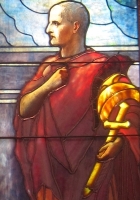
Centurion of the Roman cohort stationed at Caesarea, Palestine in the early 1st century. A Roman pagan, he received the Holy Spirit while listening to the preaching of Saint Peter the Apostle; he sent for Peter who baptized the entire family. He was the first known Gentile convert to Christianity, and the baptism of his whole household points to the first century use of infant baptism. First bishop of Caesarea.
Now in Caesarea there was a man named Cornelius, a centurion of the Cohort called the Italica, devout and God-fearing along with his whole household, who used to give alms generously to the Jewish people and pray to God constantly. One afternoon about three o'clock, he saw plainly in a vision an angel of God come in to him and say to him, "Cornelius." He looked intently at him and, seized with fear, said, "What is it, sir?" He said to him, "Your prayers and almsgiving have ascended as a memorial offering before God. Now send some men to Joppa and summon one Simon who is called Peter. He is staying with another Simon, a tanner, who has a house by the sea." When the angel who spoke to him had left, he called two of his servants and a devout soldier from his staff, explained everything to them, and sent them to Joppa.
The next day, while they were on their way and nearing the city, Peter went up to the roof terrace to pray at about noontime. He was hungry and wished to eat, and while they were making preparations he fell into a trance. He saw heaven opened and something resembling a large sheet coming down, lowered to the ground by its four corners. In it were all the earth's four-legged animals and reptiles and the birds of the sky. A voice said to him, "Get up, Peter. Slaughter and eat." But Peter said, "Certainly not, sir. For never have I eaten anything profane and unclean." The voice spoke to him again, a second time, "What God has made clean, you are not to call profane."e This happened three times, and then the object was taken up into the sky.
While Peter was in doubt about the meaning of the vision he had seen, the men sent by Cornelius asked for Simon's house and arrived at the entrance. They called out inquiring whether Simon, who is called Peter, was staying there. As Peter was pondering the vision, the Spirit said [to him], "There are three men here looking for you. So get up, go downstairs, and accompany them without hesitation, because I have sent them." Then Peter went down to the men and said, "I am the one you are looking for. What is the reason for your being here?" They answered, "Cornelius, a centurion, an upright and God-fearing man, respected by the whole Jewish nation, was directed by a holy angel to summon you to his house and to hear what you have to say."g So he invited them in and showed them hospitality. The next day he got up and went with them, and some of the brothers from Joppa went with him.
On the following day he entered Caesarea. Cornelius was expecting them and had called together his relatives and close friends. When Peter entered, Cornelius met him and, falling at his feet, paid him homage. Peter, however, raised him up, saying, "Get up. I myself am also a human being." While he conversed with him, he went in and found many people gathered together and said to them, "You know that it is unlawful for a Jewish man to associate with, or visit, a Gentile, but God has shown me that I should not call any person profane or unclean. And that is why I came without objection when sent for. May I ask, then, why you summoned me?" Cornelius replied, "Four days ago at this hour, three o'clock in the afternoon, I was at prayer in my house when suddenly a man in dazzling robes stood before me and said, 'Cornelius, your prayer has been heard and your almsgiving remembered before God. Send therefore to Joppa and summon Simon, who is called Peter. He is a guest in the house of Simon, a tanner, by the sea.' So I sent for you immediately, and you were kind enough to come. Now therefore we are all here in the presence of God to listen to all that you have been commanded by the Lord."
Then Peter proceeded to speak and said, "In truth, I see that God shows no partiality. Rather, in every nation whoever fears him and acts uprightly is acceptable to him. You know the word [that] he sent to the Israelites as he proclaimed peace through Jesus Christ, who is Lord of all,k what has happened all over Judea, beginning in Galilee after the baptism that John preached, how God anointed Jesus of Nazareth with the holy Spirit and power. He went about doing good and healing all those oppressed by the devil, for God was with him.m We are witnesses of all that he did both in the country of the Jews and (in) Jerusalem. They put him to death by hanging him on a tree. This man God raised (on) the third day and granted that he be visible, not to all the people, but to us, the witnesses chosen by God in advance, who ate and drank with him after he rose from the dead.n He commissioned uso to preach to the people and testify that he is the one appointed by God as judge of the living and the dead. To him all the prophets bear witness, that everyone who believes in him will receive forgiveness of sins through his name."
While Peter was still speaking these things, the holy Spirit fell upon all who were listening to the word. The circumcised believers who had accompanied Peter were astounded that the gift of the holy Spirit should have been poured out on the Gentiles also, for they could hear them speaking in tongues and glorifying God. Then Peter responded, "Can anyone withhold the water for baptizing these people, who have received the holy Spirit even as we have?"q He ordered them to be baptized in the name of Jesus Christ. Then they invited him to stay for a few days. - Acts 10:1-49
https://catholicsaints.info/saint-cornelius-the-centurion/
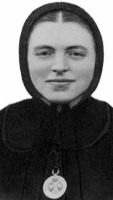
• Ann Francis Boscardin
• Anna Francesca Boscardin
• Maria Bertilla
Born to a poor peasant family headed by Angelo Boscardin who, by his own account, was a violently abusive drunk. Anna had little education, was simple and innocent, and was considered mentally slow; referred to as the goose (as in, "silly as a..."). Worked as a house servant in her youth. Joined the Sisters of Saint Dorothy, Daughters of the Sacred Heart at Vincenza, Italy in 1904, taking the name Bertilla. After working in the convent's kitchen and laundry, she trained as a nurse in 1907.
Assigned to the hospital in Treviso, Italy, a facility managed by the Sisters of Saint Dorothy. Sister Maria worked in the children's ward, becoming a great favorite for her simple, gentle way with the young patients. She cared for wounded Italian soldiers during World War I, and was noted by local authorities for staying with patients in 1917 while the area was being bombed. A supervisor, angry at Bertilla's growing reputation, reassigned her to the hospital laundry. Her congregation's mother-general heard of this vindictive treatment, and transferred Bertilla back to nursing, making her the supervisor of the children's ward in 1919.
6 October 1888 at Brendola, Italy as Anna Francesca Boscardin
• 20 October 1922 of cancer at Treviso, Italy
• many healing miracles reported at her tomb
• 11 May 1961 by Pope John XXIII
• the crowds gathered for the recognition included family members and an unknown number of her patients
https://catholicsaints.info/saint-maria-bertilla-boscardin/
19 February (translation of relics)
Grew up in the household of Saint Bosa of York, and became his spiritual student, aide, and travelling companion. Benedictine monk. Close friend of and chaplain to Saint Wilfrid, and accompanied him on trips to the continent. Friend of the Venerable Bede, who dedicated some of his writings to Acca. Abbot of Saint Andrews at Hexham, England in 709, nominated by Saint Wilfrid just before that holy man died. Bishop of Hexham.
Built churches, and re-outfitted the principal church at Hexham. Had a beautiful singing voice, and encouraged the revival of vocal music in British liturgy. First English prelate to appeal to Vatican in a dispute. Believed the Church in England needed to be more like Rome in liturgical form. Bible scholar with a large theological library who supplied information for Bede's Ecclesiastical History.
Political intrigues led to king Ceolwulf of Northumbria being kidnapped in 731, and forced to enter a monastery. Ceolwulf's supporters later restored him to the throne, and Acca was exiled, which probably indicates his involvement in the coup. Some records imply that he fled west, and was appointed bishop of Whithorn.
c.660 in Northumbria, England
• 20 October 742 at Whithorn, Galloway, Scotland of natural causes
• buried beside the east wall of Hexham Cathedral between two huge stone crosses decorated with vines and tendrils, which survive to today and can be seen in the abbey church
• relics translated in the late 10th century, in 1154, and in 1240
learning
• abbot in a library with monks
• bishop in a library
• with the Venerable Bede
https://catholicsaints.info/saint-acca/
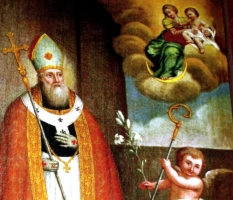
Born to the Polish nobility. Franciscan. Guardian of the Franciscan friary in Lviv, Poland. Defended mendicant friars from attacks by secular clergy. Was especially close to the Orthodox community in the area, and worked to reduce tensions between them and Catholic Christians. Vicar-general of Franciscan missions in western Russia, he worked and preacher to revitalize the faithful, and promoted devotion to Mary. Helped organized the Travellers for Christ c.1360, a group of Franciscan and Dominican friars who lived and traveller together to conduct parish missions. Archbishop of Halicz, Galacia in 1392; he served for 19 years, all the while continuing to wear his Franciscan habit, travel on foot, and live as a friar. He built religious houses, schools, hospitals and churches, and brought Polish priests to his diocese to staff his new institutes. Worked with the Polish parliment on practical, secular matters to improve the lot of the people.
c.1350 in Galacia, Poland
• 1 June 1411 at Lviv, Poland (in modern Ukraine) of natural causes
• buried in the Franciscan church in Lviv
1791 by Pope Pius VI (cultus confirmed)
https://catholicsaints.info/blessed-james-of-strepar/
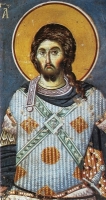
• Artemios of Antioch
• Artemois the Greatmartyr
• Challita, Shallita
Noted soldier and military leader under Emperor Constantine the Great. Imperial prefect (viceroy) of Egypt and Duke of Alexandria, appointed by Emperor Constantius; he used his position to spread the faith. During the reign of Julian the Apostate, Artemius became a fanatical Arian heretic, hunting and persecuting monks, nuns and bishops, including Saint Athanasius. However, through prayer and the horror of the persecutions, Artemius converted to orthodox Christianity, supported the faith, and turned on pagans, including Julian. He was accused by heathens of destroying idols, arrested, taken to Antioch, tortured and martyred.
• beheaded in 363 in Antioch
• buried by local Christians in Antioch
• relics later transferred to Constantinople
O victorious Artemios, thou wast a noble athlete. Now like a shining lamp thy miracles enlighten the world for the salvation of our souls. - Troparion, Tone 5
https://catholicsaints.info/saint-artemius-megalomartyr/
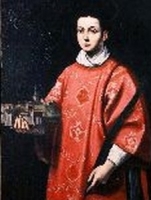
• Maximus of Aveia
• Massimo...
Raised in a pious family, Maximus became a zealous deacon at Aveia, Italy. He aspired to the priesthood, but his open and unapologetic Christianity led to him being imprisoned, tortured and executed during the persecutions of Decius. Martyr.
c.228 in Aveia, Italy
• thrown off a cliff in Aveia, Italy c.250
• relics transferred to Civitas Sancti Maximi (modern Forcona, Italy), date unknown; know to have been there in 10 June 956
• relics enshrined in the cathedral in Aquila, Italy in 1256
• relics destroyed by an earthquake in 1703
Aquila, Italy
https://catholicsaints.info/saint-maximus-of-aquila/
Andrea il Calibita
Eighth-century hermit on Crete. When the Byzantine Emperor Constantine Copronymus published his edict against venerating icons, Andrew went to Constantinople and denounced the iconoclast heresy so forcefully that he was taken before the emperor himself. Martyr.
Crete
• tortured and flogged to death c.763 in Constantinople
• body thrown off the city walls into the garbage dump
https://catholicsaints.info/saint-andrew-of-crete-20-october/
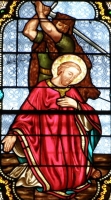
Caprasio
Tried to hide out in the hills near his home during the persecutions of Diocletian, but the courage shown by Saint Faith led Caprasius to openly proclaim his own Christianity. Martyr.
Agen, France
beheaded in 303
https://catholicsaints.info/saint-caprasius-of-agen/
Father Lucas of the Holy Spirit
Dominican priest. Martyr.
18 October 1594 in Carracedo de Vidriales, Zamora, Spain
20 October 1633 in Nishizaka, Nagasaki, Japan
18 October 1987 by Pope John Paul II
https://catholicsaints.info/saint-lucas-alonso-gorda/
Archdeacon. Pilgrim to Palestine where he was imprisoned by Saracens for his faith. He returned to France with a number of relics of the saints. Built the Holy Sepulchre Abbey at Samblières, France.
Troyes, France
1004 in Troyes, France of natural causes
https://catholicsaints.info/saint-aderald/
• Bernard of Castro
• Bernard of Vulcia
Bishop of Vulcia, Italy. Moved the diocese to Ischia de Castro.
Bagnorea, Italy
c.800
https://catholicsaints.info/saint-bernard-of-bagnorea/
Adeline
Grand-daughter of William the Conqueror. Sister of Saint Vitalis. Benedictine nun. Abbess of the convent of La Blanche, Moriton, Normandy, a house her brother had founded.
1125 of natural causes
https://catholicsaints.info/saint-adelina/
Barsabas
Monk. Abbot. Martyred with eleven of his monks in the persecutions of King Shapur II.
Persian
342 near the ruins of Persepolis (in modern Iran)
https://catholicsaints.info/saint-barsabias/
Gonzalo
Benedictine monk at Silos, Old Castile (Spain) under Saint Dominic of Silos.
c.1073 of natural causes
https://catholicsaints.info/blessed-gundisalvus-of-silos/
Monk. Spiritual student of Saint Rupert of Salzburg. Abbot of Saint Peter's Abbey in Salzburg, Austria. Archbishop of Salzburg from 717 to 745.
745
https://catholicsaints.info/saint-vitalis-of-salzburg/
Leopardus
First bishop of Osimo, Italy, serving in the 5th century.
archdiocese of Ancona-Osimo, Italy
https://catholicsaints.info/saint-leopardo-of-osimo/
Monk. Abbot in Persia. Tortured and executed with twelve of his brother monks during the persecutions of Sapor. Martyr.
beheaded in 341 at Ishtar, Persia
https://catholicsaints.info/saint-usthazanes/
Sindulphus
Hermit in Aussonce, France.
Gascony, France
660
https://catholicsaints.info/saint-sindulf-of-rheims/
Nun in Portugal, possibly at Santarem where her memory is especially revered. Died fighting off a rape attempt.
c.653
https://catholicsaints.info/saint-irene-20-october/
Martyr. May have been part of the group that travelled with Saint Ursula.
Cologne, Germany
https://catholicsaints.info/saint-martha-of-cologne/
Eighth-century bishop of Mayo, Ireland.
768
https://catholicsaints.info/saint-aidan-of-mayo/
Martyr.
Cologne, Germany
https://catholicsaints.info/saint-saula-of-cologne/
Bradano
Saint venerated on the Isle of Man.
https://catholicsaints.info/saint-bradan/
Crora
Saint venerated on the Isle of Man.
https://catholicsaints.info/saint-orora/
• Jakob Kern
CatholicSaints.Info Portable Edition